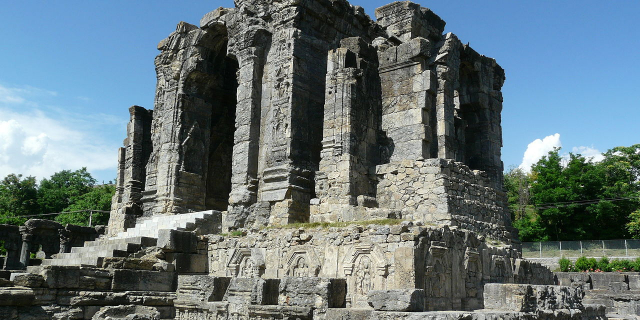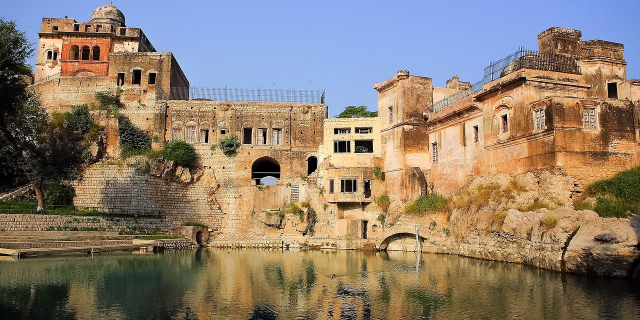Takht-i-Bahi
Takht-i-Bahi (Pashto/Urdu: تختِ باہی, lit. 'throne of the water spring'), is an Indo-Parthian archaeological site of an ancient Buddhist monastery in Mardan, Khyber-Pakhtunkhwa, Pakistan. The site is considered among the most important relics of Buddhism in all of what was once Gandhara, and has been "exceptionally well-preserved."
The monastery was founded in the 1st century CE, and was in use until the 7th century. The complex is regarded by archaeologists as being particularly representative of the architecture of Buddhist monastic centers from its era. Takht-i-Bahi was listed as a UNESCO World Heritage Site in 1980.
Archaeologists have divided the history of the complex into four periods, beginning in the 1st century BCE.[1]
The monastic complex was likely founded in the early 1st century CE.[2] It is proven by an inscriptions found bearing the name of Gondophares (20–46 CE).[3] After Gondophares, the area fell under control of Kujula Kadphises,[3] the first Kushan king. This first era continued until the 2nd century CE, and is associated with another Kushan king Kanishka, as well as early Parthian and subsequent Kushan kings.[1] The second construction period, which included the creation of the Stupa Court and assembly hall, took place during the 3rd and 4th centuries CE. A third construction period, associated with the later Kushan dynasty and the Kidara Kushana rulers, occurred during the 4th and 5th centuries.
The region was subjugated by Huns in middle of fifth century CE which ended the Kushan rule. The Hun Toramana and then his son Mihirakula slaughtered the inhabitants of the Gandhara region and destroyed most if not all Buddhist monasteries. Evidence suggests that Takht-i-Bahi was destroyed in the same period of destruction by the Huns, however the complex appears to have been in use until 7th century CE.[3][4]
The first modern historical reference to these ruins was made in 1836 by a French officer who referred to the Buddhist remains in a village named Mazdoorabad.[1] Explorations and excavations on the site began in 1864.[1] A significant number of objects can be found in the British Museum.[5] The site underwent a major restoration in the 1920s.[6]



































Add new comment